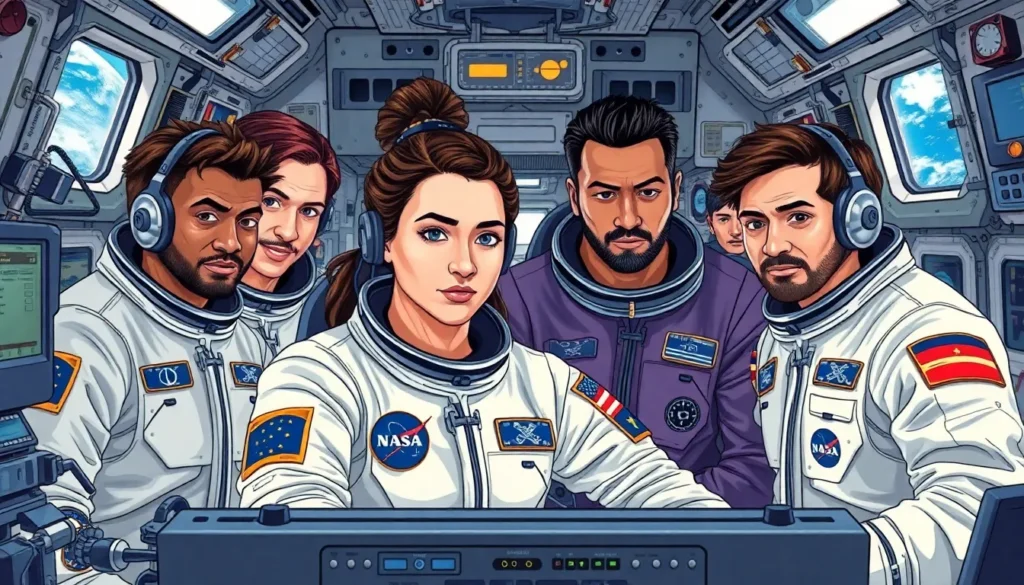Table of Contents
ToggleIn a universe filled with mysteries and cosmic wonders, astronomy news keeps stargazers on the edge of their seats. From mind-boggling black holes to distant exoplanets that could host alien life, the latest discoveries are nothing short of a celestial soap opera. Who wouldn’t want to know if there’s a planet out there with a better Wi-Fi signal than Earth?
Recent Discoveries in Astronomy News
Recent discoveries in astronomy foster excitement among scientists and enthusiasts. Notable findings continue to shape the understanding of the universe.
Breakthroughs in Exoplanet Research
Exoplanet research achieved significant milestones this year. Over 5,000 confirmed exoplanets exist, with many located in habitable zones. A recent study identified a potentially Earth-like planet, TOI 700 e, showing favorable conditions for life. Data from the Transiting Exoplanet Survey Satellite (TESS) confirmed its size and distance from its star. Enhancements in observational technology further aid in discovering smaller exoplanets. Scientists expect to learn more about their atmospheres and compositions using the James Webb Space Telescope.
New Insights into Black Holes
New studies revealed intriguing insights into black holes. Recent observations indicated the presence of intermediate-mass black holes, bridging gaps between stellar and supermassive counterparts. Researchers detected gravitational waves from merging black holes, offering evidence of their formation dynamics. Examining the Event Horizon Telescope data produced stunning images of black hole shadows. Further, scientists proposed theories that explain black hole growth and behavior over time. These discoveries deepen understanding of the universe’s structure and evolution.
Major Events in the Astronomy Community

Recent developments in the astronomy community showcase fascinating events and gatherings, connecting enthusiasts with the latest cosmic discoveries.
Upcoming Astronomical Events
Stargazers can look forward to a series of celestial events in the coming months. A total lunar eclipse is scheduled for November 8, 2022, visible across North America. Meteor showers, such as the Geminids in December, promise dazzling displays of shooting stars. Notably, the Great Conjunction of Jupiter and Saturn will occur on December 21, 2022, creating a spectacular sight in the night sky. Observers are encouraged to prepare telescopes and plan viewing parties to share these awe-inspiring moments.
Noteworthy Conferences and Symposiums
Several key conferences are set to take place, emphasizing collaboration and knowledge sharing. The American Astronomical Society’s annual meeting in January 2023 will highlight the latest research breakthroughs. Another significant event, the Planetary Science Conference, is scheduled for March 2023, focusing on planetary exploration and discoveries. Attendees will engage with leading scientists and participate in workshops on innovative technologies and methodologies. Networking opportunities at these events foster community growth and enhance the scientific dialogue surrounding astronomy.
Technological Advances in Astronomy
Technological advancements continue to shape the field of astronomy. Enhanced observational tools and innovative approaches play a crucial role in expanding knowledge about the universe.
Innovative Telescopes and Instruments
New telescopes and instruments have transformed astronomical research. The James Webb Space Telescope offers unprecedented views of distant galaxies, allowing researchers to study their formation. Ground-based observatories, such as the Gran Telescopio Canarias, enhance observational capabilities with advanced adaptive optics. These innovations enable scientists to gather more precise data on exoplanets, improving understanding of their atmospheres. International collaborations, like the Cherenkov Telescope Array, provide extensive insights into cosmic rays and high-energy processes. These state-of-the-art technologies drive significant progress in observational astronomy.
The Role of Artificial Intelligence
Artificial intelligence significantly impacts data analysis in astronomy. AI algorithms quickly process vast amounts of astronomical data collected by telescopes. Machine learning techniques identify patterns in light curves, aiding in the discovery of new exoplanets and transient events. Automation reduces the time required for analyzing images, leading to faster discoveries. Scientific collaborations implement AI to enhance simulations of cosmic events, such as supernova explosions. As AI algorithms evolve, they hold the promise for more profound discoveries in the universe’s mysteries.
Impact of Astronomy News on Society
Astronomy news captures the public’s imagination, influencing various aspects of society. Its role extends beyond scientific circles, engaging a diverse audience fascinated by cosmic mysteries.
Public Interest in Space Exploration
Public enthusiasm for space exploration has surged due to recent astronomical discoveries. Fewer than 10 years ago, the confirmation of exoplanets ignited widespread curiosity about life beyond Earth. Research shows 56% of Americans support increased funding for space exploration initiatives. Rare celestial events, like the Great Conjunction of Jupiter and Saturn, attract millions of viewers worldwide. Social media amplifies this interest, as people share observations and experiences. Consequently, astronomy-related shows and documentaries gain popularity, stimulating discussions. The combination of technology and discovery fosters a sense of community among stargazers and scientists alike.
Education and Outreach Programs
Education and outreach programs promote awareness of astronomical advancements. Numerous organizations, such as NASA and local planetariums, host workshops and events. These initiatives engage students and the general public with hands-on activities. Surveys indicate that 73% of participants feel more connected to science after attending such programs. School curricula include space topics, encouraging students to explore cosmic phenomena and cultivate scientific curiosity. Additionally, online resources and virtual tours make astronomy accessible to wider audiences. Increased collaboration between educational institutions and professional astronomers improves resources and engagement, enhancing society’s understanding of the universe.
Conclusion
Astronomy news continues to inspire curiosity and wonder among people of all ages. With each new discovery and technological advancement the universe reveals more of its secrets. The excitement surrounding upcoming celestial events and groundbreaking research fosters a vibrant community of enthusiasts eager to learn and share.
As public interest in space exploration grows so does the importance of education and outreach. Organizations are stepping up to engage the next generation of astronomers and scientists. The journey of understanding our universe is just beginning and the thrill of discovery promises to captivate minds for years to come.







